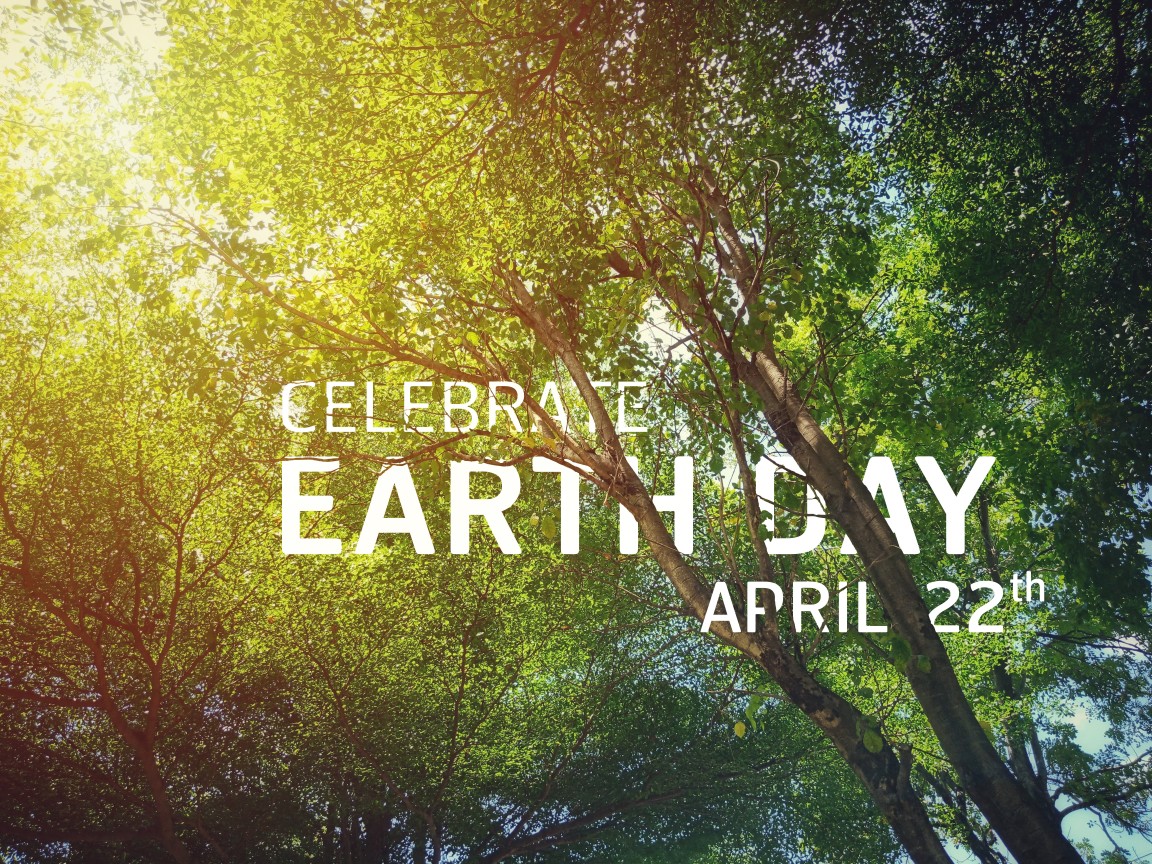How a Rainy Night and Beyoncé Kept DC Metro Running
August 9, 2023
In the captivating world of music and entertainment, artists wield a unique power that extends beyond the boundaries of the stage, leaving an indelible mark on the hearts and minds…

Every year on April 22, the citizens of this planet come together to celebrate mother Earth. Earth Day is one of the most important days of the year for our planet, and it has an incredible tale behind it — that a small grassroots movement became a worldwide phenomenon. The story of Earth Day is the story of how people can come together to make a difference for a common goal, and in this instance, that common goal is the survival of the planet. Here, we’ll explore the significance of Earth Day and its historical and cultural impact. So let’s take a deep dive into the history of Earth Day and discover why we celebrate it each year.
In the 1960s, the United States experienced a wave of environmental disasters that led to increased public concern for the state of the planet. These events included the oil spill off the coast of Santa Barbara in 1969, which caused massive damage to marine life and coastlines, and the publication of Rachel Carson’s groundbreaking book, “Silent Spring,” which highlighted the harmful effects of pesticides on the environment and human health.
Against this backdrop, the idea of a national day dedicated to environmental awareness and action began to take shape. The concept was championed by Senator Gaylord Nelson, a Democrat from Wisconsin, who had long been an advocate for environmental causes. In 1969, he proposed the idea of a national teach-in on the environment to be held on college campuses across the country. The idea quickly gained momentum, and a small team of organizers set to work planning the first Earth Day, which was to be held on April 22, 1970.
The planning process was an impressive feat of organization, with volunteers and organizers working tirelessly to coordinate events across the country. The first Earth Day saw a wide range of activities and events, from educational seminars to environmental cleanups, and even a “die-in” in New York City, where thousands of protesters lay on the ground to symbolize the impact of pollution on human health.
The impact of the first Earth Day was significant, both in terms of public awareness and legislative action. An estimated 20 million Americans participated in the day’s events, and the media coverage helped to bring environmental issues to the forefront of the national conversation. In the months that followed, the U.S. government passed a series of landmark environmental laws, including the Clean Air Act, the Clean Water Act, and the Endangered Species Act. For the potential for collective action in the face of environmental challenges, Earth Day was a powerful demonstration. It showed that ordinary people could make a difference and paved the way for the ongoing environmental activism and advocacy that we see today.

Beyond the success of the first event, the enthusiasm for Earth Day led to legislative victories that helped to shape modern environmental policy. The Clean Air Act was passed just months after the first Earth Day and helped to reduce pollution levels across the country. The Clean Water Act was passed in 1972 and helped to protect rivers, lakes, and other bodies of water from pollution and contamination. The Endangered Species Act, also passed in 1972, protected threatened and endangered species from extinction.
Earth Day also has had a significant impact on the growth and evolution of environmentalism as a movement. In the years that followed the first Earth Day, celebrations expanded beyond the United States to become a widely popular global event. Earth Day Network, the organization that coordinates Earth Day events around the world, estimates that over 1 billion people participate in Earth Day activities each year.
Earth Day celebrations and environmental campaigns have also evolved to encompass a wider range of important issues, from climate change to sustainable agriculture. The emphasis on individual action has also grown, with many Earth Day campaigns encouraging people to make small changes in their daily lives to reduce their environmental impact and overall carbon footprint.
Earth Day and its environmental impact have extended far beyond the United States. The event serves as a catalyst for global environmental awareness and activism. In recent years, Earth Day celebrations have become increasingly important in countries with growing environmental concerns, such as China and India. Earth Day Network has launched dedicated initiatives to address global environmental challenges like the Great Global Cleanup, which aims to remove billions of pieces of trash from the world’s oceans, rivers, and lakes. Significant and far-reaching, Earth Day continues to actively help to raise public awareness of environmental issues, inspire legislative action, and promote a more sustainable and equitable future for all.
As a significant global event, Earth day brings people together from all over the world to participate in a wide range of activities and events to raise awareness about current environmental issues and promote sustainability. Many communities organize clean-up efforts, tree plantings, and other outdoor activities to demonstrate their commitment to protecting the planet.
Earth Day has also become a platform for global environmental campaigns. More recently, Earth Day Network has launched initiatives to address issues such as plastic pollution, climate change, and deforestation. One of the most notable campaigns is the “Restore Our Earth” campaign, which seeks to highlight the critical and timely role that restoration and conservation play in creating a more sustainable future.
Despite the progress that has been made since the first Earth Day nearly six decades ago, the fight for a sustainable planet remains an ongoing challenge. Climate change continues to be one of the biggest threats to the planet, with rising temperatures and sea levels posing significant risks to human health and safety. The degradation of natural habitats and loss of biodiversity also threaten the long-term health of the planet and its inhabitants.
But it’s not all doom and gloom. There are many signs of progress in the fight for a sustainable planet. Renewable energy sources such as solar and wind power are becoming increasingly affordable and accessible, and more people are adopting sustainable practices in their daily lives. Companies and organizations are also taking steps to reduce their environmental impact, and many are setting ambitious sustainability goals and investing in eco-friendly technologies and practices.
As we approach another Earth Day, it’s important to remember that the fight for a sustainable planet is ongoing. Raising awareness about environmental issues, advocating for policy changes that promote sustainability, and taking individual actions to reduce our environmental impact are necessary endeavors. By working together, we can create a more sustainable future for the generations to come.
Earth Day is a great opportunity to show your commitment to protecting the planet and promoting sustainability. Whether you’re looking for ways to get involved in local events or make changes in your daily life, there are a good number of things you can do to make a difference this Earth Day.
Earth Day events are held in communities all around the world. Check your local listings to see if there are any events in your area, such as clean-up efforts, tree plantings, or educational workshops.
One of the biggest contributors to climate change is carbon emissions. There are many things you can do to reduce your carbon footprint, such as using public transportation or carpooling, turning off lights and electronics when not in use, and eating a plant-based diet.
Water is a precious resource that is often taken for granted. You can conserve water by taking shorter showers, fixing leaks, and watering plants in the early morning or late evening to reduce evaporation.
Landfills are a major source of pollution and greenhouse gas emissions. You can reduce waste by recycling, composting, and using reusable products instead of disposable ones.
There are many organizations working to protect the planet and promote sustainability. Consider making a donation or volunteering your time to support their efforts.
This may be one of the most powerful things you can do for the planet. Educating others about environmental issues and the importance of sustainability and sharing information and resources with friends, family, and coworkers to help spread awareness and inspire action.
Every action counts when it comes to protecting the planet. By taking steps to reduce your environmental impact and supporting sustainability initiatives, you can do your part to help create a more sustainable and equitable future for all.

The question here, rather, should be why didn’t we celebrate Earth Day sooner than 1969?
When we consider the incredible beauty and diversity of the natural world, it’s hard to believe that it took until the late 1960s for us to collectively recognize the need to protect and preserve it. The history of humanity is marked by a complex relationship with the environment, one that has often been characterized by exploitation and disregard for the natural world.
Despite the many challenges and environmental catastrophes — both natural and human-caused — that have occurred over the course of history, it is heartening to see that we are finally beginning to recognize the importance of sustainable living and environmental stewardship. From grassroots initiatives to global campaigns, people all around the world are coming together to take action and create positive change. There is still so much work to be done if we hope to ensure a healthy and sustainable future for our planet, and climate change, biodiversity loss, and other pressing environmental issues require urgent action and commitment from individuals, communities, and governments alike.
As we look back on the history of Earth Day and the environmental movement, we can see just how far we have come and how much further we have to go. By continuing to work together and prioritize sustainability in all aspects of our lives, we can create a future that is healthy, equitable, and sustainable for all.